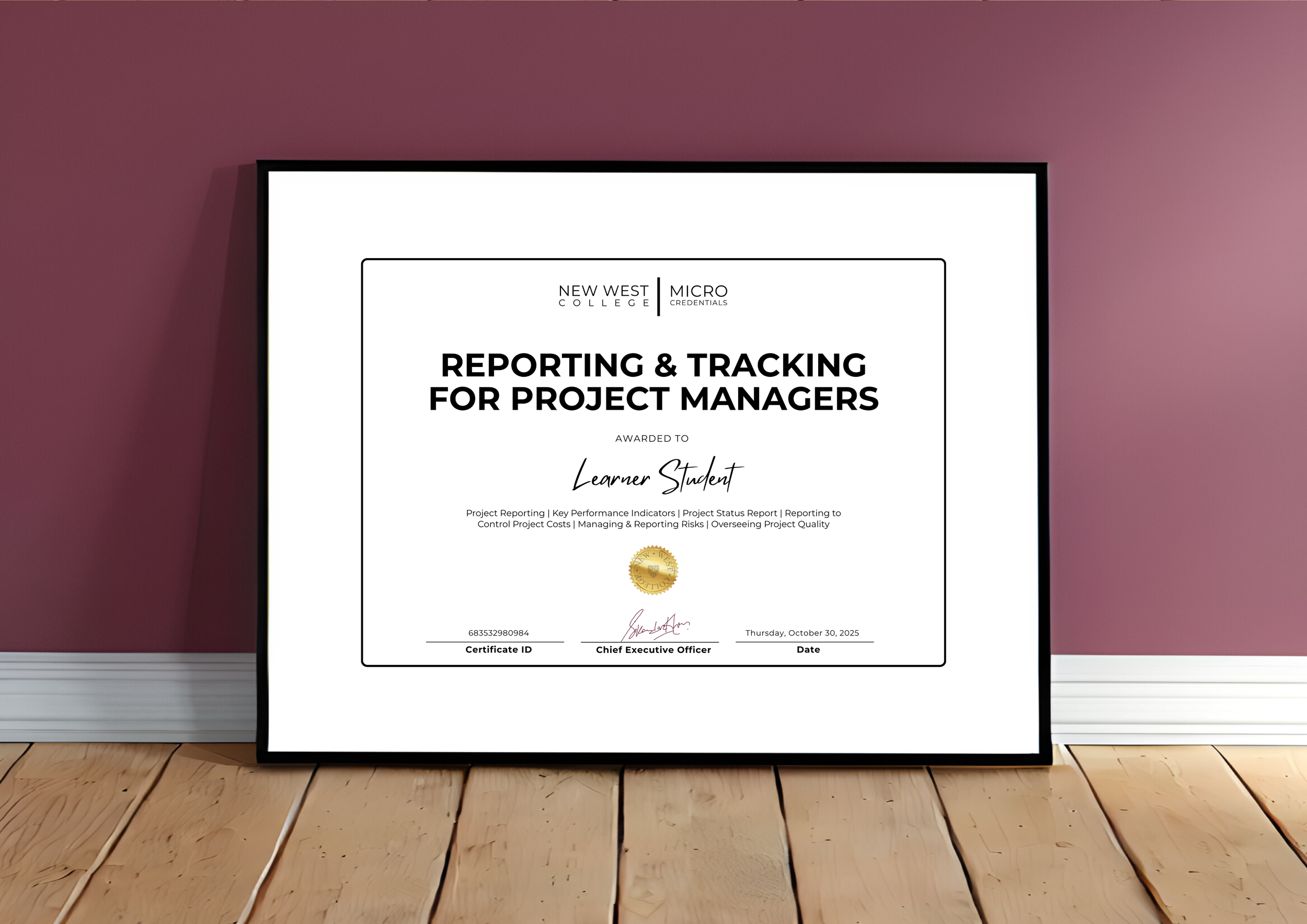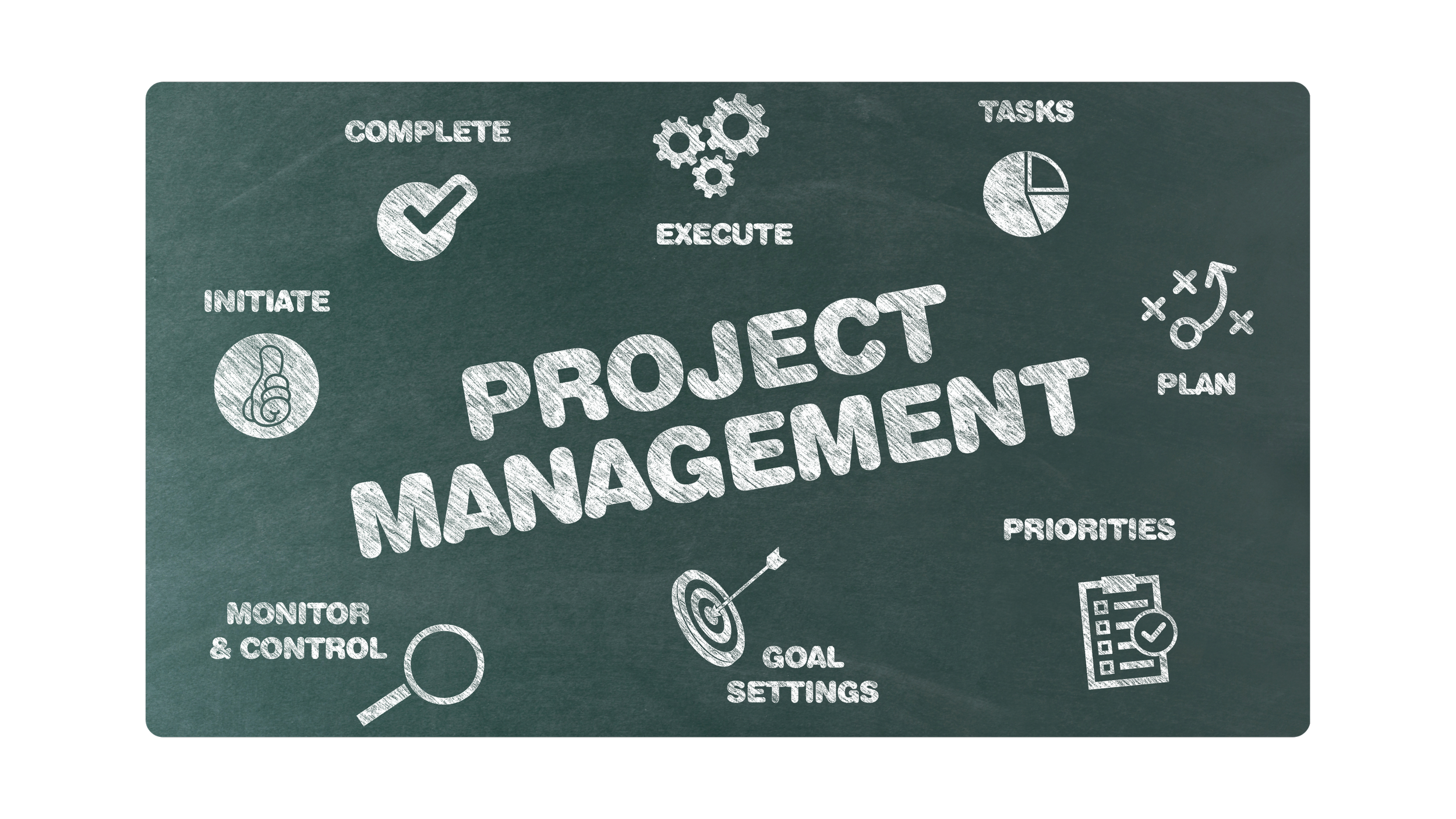Project reporting and tracking are essential practices that help project managers keep information organized, visible, and actionable. This course teaches learners how to develop clear, data-driven reports, use key performance indicators, control project costs, manage risks, and maintain quality throughout the project lifecycle. Learners explore the purpose of reporting, the four essential types of project reports, and the communication strategies that support transparency and decision-making. By the end of the course, learners understand how effective reporting elevates team performance, strengthens accountability, and keeps projects moving in the right direction.
Learning Outcomes:
➊ Explain what project reporting is and how it supports project visibility and control.
➋ Use the four essential project reports: status, expenses, resources, and time sheets.
➌ Select and apply KPIs that measure timeline, budget, quality, and effectiveness. Create structured status reports that monitor milestones, issues, risks, and team progress.
➍ Track and report expenses to identify cost variances and maintain financial awareness.
➎ Build a risk management plan that identifies, prioritizes, mitigates, and monitors risks.
Requirements:
There are no specific entry requirements for this Micro Credential, however, this credential is ideal for:
New or aspiring professionals who need foundational project management skills to support their current or future roles.
Employees who manage tasks, timelines, or small initiatives but lack formal project management training.
Career changers seeking a practical, short pathway into project-based work across any industry.
Course Content:
Learners explore what project reporting is and why it matters, beginning with the role reports play as communication tools that convey performance, spending, scheduling, and overall project progress. They are introduced to the four essential types of project reports—status reports, expense reports, resource reports, and time sheets—and learn how each one supports visibility, accountability, and informed decision-making. The course also outlines seven key benefits of reporting, emphasizing how strong reporting practices help teams stay aligned, anticipate challenges, and prevent risks from going unnoticed.
The course then introduces key performance indicators and explains how KPIs measure the achievement of project goals. Learners examine common project KPIs related to timeline, budget, quality, and effectiveness, such as cycle time, budget variance, client satisfaction, and resource utilization. They also learn how to select SMART KPIs that are specific, measurable, attainable, relevant, and time based, ensuring that project performance is assessed using meaningful and actionable metrics.
Learners study the structure and purpose of project status reports as essential tools for monitoring project health. They explore the four core sections of a status report: the executive overview, milestones and deliverables, issues and risks, and team progress. Through this, they understand how a well written status report creates visibility, tracks variances from the plan, guides corrective action, and keeps the entire team aligned as work progresses.
The course also explains how budgeting, tracking, and reporting work together to control project costs. Learners follow a clear process for identifying costs, creating time based budgets, recording expenses, identifying deviations, and adjusting forecasts when necessary. They examine the four primary benefits of cost controlling—spotting overruns early, building trust with stakeholders, improving future forecasting, and strengthening overall financial awareness.
Risk management is another key component of the course. Learners discover how to identify, evaluate, and mitigate project risks while understanding why risk management is essential to maintaining project stability. They learn the seven steps of developing a strong risk management plan, which include identifying threats, identifying opportunities, prioritizing risks, building mitigation strategies, assigning ownership, creating a risk register, and monitoring risks throughout the project lifecycle.
Finally, learners are introduced to the three components of quality management: quality planning, quality assurance, and quality control. They explore how to develop a quality management plan, verify that work meets standards during execution, and apply corrective actions through quality control processes. The course concludes by teaching the seven foundational quality tools—cause and effect diagrams, flowcharts, checksheets, histograms, Pareto charts, control charts, and scatter diagrams—which help project managers analyze problems, monitor performance, and maintain consistent quality across deliverables.







